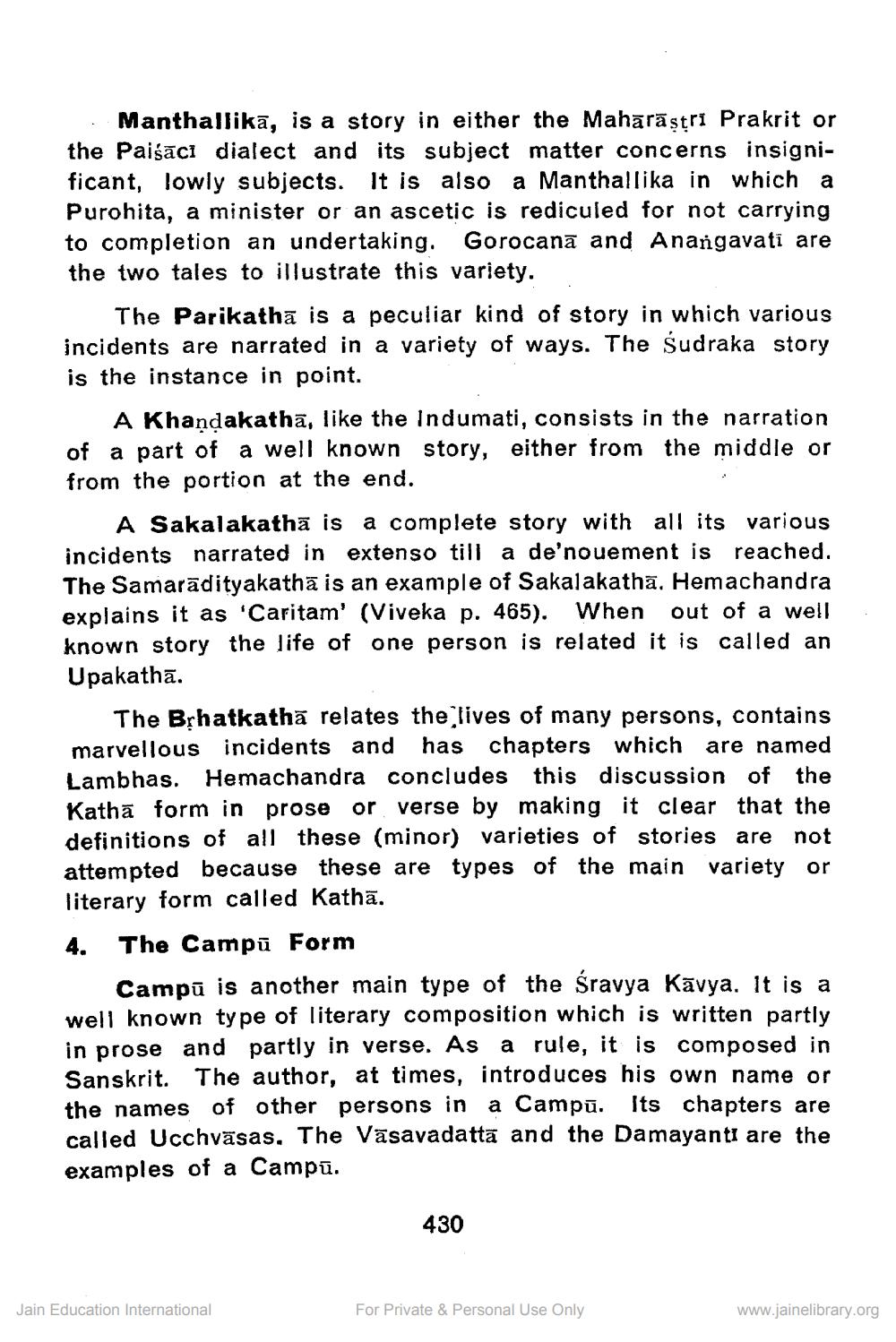________________
• Manthallikā, is a story in either the Mahārāştri Prakrit or the Paisāci dialect and its subject matter concerns insignificant, lowly subjects. It is also a Manthallika in which a Purohita, a minister or an ascetic is rediculed for not carrying to completion an undertaking. Gorocana and Anangavati are the two tales to illustrate this variety.
The Parikatha is a peculiar kind of story in which various incidents are narrated in a variety of ways. The Sudraka story is the instance in point.
A Khandakathā, like the Indumati, consists in the narration of a part of a well known story, either from the middle or from the portion at the end.
A Sakalakathā is a complete story with all its various incidents narrated in extenso till a de'nouement is reached. The Samarādityakatha is an example of Sakalakathā. Hemachandra explains it as 'Caritam' (Viveka p. 465). When out of a well known story the life of one person is related it is called an Upakatha.
The Brhatkathā relates the lives of many persons, contains marvellous incidents and has chapters which are named Lambhas. Hemachandra concludes this discussion of the Kathā form in prose or verse by making it clear that the definitions of all these (minor) varieties of stories are not attempted because these are types of the main variety or literary form called Kathā. 4. The Campū Form
Campū is another main type of the śravya Kavya. It is a well known type of literary composition which is written partly in prose and partly in verse. As a rule, it is composed in Sanskrit. The author, at times, introduces his own name or the names of other persons in a Campū. Its chapters are called Ucchvāsas. The Vāsavadatta and the Damayanti are the examples of a Campū.
430
Jain Education International
For Private & Personal Use Only
www.jainelibrary.org




